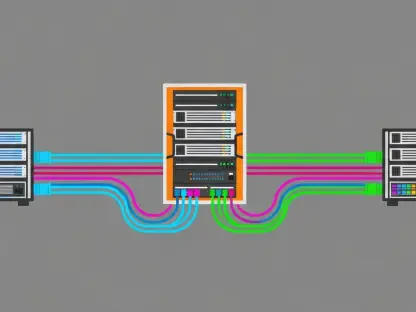The current state of telecommunications security in the United States is alarming, with Chinese state hackers exploiting significant vulnerabilities within the telco infrastructure. This critical issue, despite its severity, remains relatively underreported in mainstream media. The infiltration by Chinese hackers has become so profound that only substantial reforms can effectively address the problem. This article examines the root causes of these security breaches, detailing the regulatory and technological lapses that have allowed these vulnerabilities to persist. Furthermore, it outlines the necessary steps to fortify the telco sector against future threats to ensure national security and the privacy of American citizens.
The Extent of Chinese Espionage
Chinese state hackers have deeply infiltrated the US telco infrastructure, posing a significant threat to national security. These breaches are not isolated incidents but part of a broader, systematic effort to compromise critical communication networks. The hackers’ presence is so entrenched that only a comprehensive overhaul of the infrastructure can effectively remove them. This situation highlights a failure in both corporate governance and regulatory oversight, which have been unable to protect these vital systems.
The severity of these infiltrations cannot be overstated. The hackers have gained access to sensitive communications, potentially compromising national security and the privacy of millions of Americans. Despite the gravity of the situation, it remains underreported, leading to a sense of inevitability and apathy among the public. This lack of awareness and urgency only exacerbates the problem, allowing the vulnerabilities to persist.
Regulatory and Institutional Failures
The US government’s inability to enforce stringent regulations on telcos has significantly contributed to the current security crisis. Unlike other critical infrastructure providers, telcos have not been subjected to rigorous controls to secure their operations. Historically, telcos were either government-owned or operated under state-granted monopolies, which included strict regulatory oversight. However, the deregulation of the industry has led to a lax approach to security, leaving the infrastructure vulnerable to sophisticated attacks.
The lack of regulatory enforcement has allowed telcos to prioritize profit over security. This has resulted in outdated systems and inadequate security measures that are ill-equipped to fend off state-sponsored cyber attacks. The government’s failure to impose stringent security standards has created an environment where vulnerabilities can thrive, making it easier for foreign actors to exploit these weaknesses.
Technological Evolution and Vulnerabilities
The transition from circuit switching to IP packet switching in telco systems has introduced new vulnerabilities. While this technological evolution has brought about significant advancements in communication, it has also created security gaps that have been exploited by hackers. The lack of end-to-end encryption in modern telco systems is a critical vulnerability that needs to be addressed.
Today’s telco systems are not robust enough to withstand sophisticated attacks from state actors like China. The outdated technological paradigms and insufficient security measures have left these systems exposed. Implementing end-to-end encryption is essential to prevent unauthorized access and tampering by foreign entities. Secure systems cannot coexist with designed-in vulnerabilities, as any breach can lead to larger security compromises.
Political Contradictions and Challenges
There is a notable contradiction in the government’s stance on telco security. On one hand, the government condemns the vulnerabilities that allow foreign attackers to infiltrate telco systems. On the other hand, it pushes for more systemic vulnerabilities in the name of national security, such as expanded wiretapping capabilities. This cognitive dissonance complicates efforts to create coherent and effective security strategies.
The incoming US administration’s approach to national security and regulatory enforcement adds another layer of complexity. Conflicting priorities—deregulation, increasing national security, and a skeptical stance towards cybersecurity agencies—could further hinder efforts to secure the telco infrastructure. Clear and consistent policies are needed to address these challenges and fortify the telco sector against future threats.
The Necessity of Public and Political Engagement
To counteract the systemic issues within the telco sector, increased public and political engagement is crucial. Transparency and substantial evidence of telco infiltrations need to be brought to light to galvanize action and impose stringent security protocols. The public must be made aware of the severity of the situation to drive the necessary reforms.
Greater transparency will help mobilize public and political support for better security standards in the telco industry. This includes demanding the implementation of robust encryption standards and improved regulations. Despite the potential lack of widespread media attention, such measures are essential for fortifying telecommunications infrastructure against espionage and cyber attacks.
International Perspective and Collaboration
The state of telecommunications security in the United States is deeply troubling, with Chinese state hackers exploiting severe vulnerabilities within the telco infrastructure. Despite the gravity of the situation, mainstream media has paid relatively little attention to it. The extent of infiltration by Chinese hackers has reached a point where only substantial, comprehensive reforms can resolve the issue. This article delves into the root causes of these security breaches, exploring the regulatory and technological shortcomings that have allowed such vulnerabilities to exist. Additionally, it proposes essential measures to strengthen the telecommunications sector against future threats, thereby safeguarding national security and Americans’ privacy. Addressing these challenges requires an in-depth understanding of both the technical aspects and the policy failures that have led to the current state of affairs. By identifying these gaps and implementing strategic changes, the U.S. can better protect itself from similar breaches in the future.









